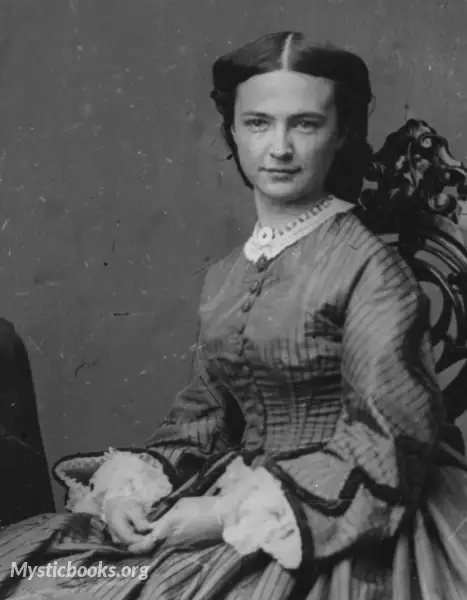
Timeline
Title
Country/Nationality
Elizabeth Bacon Custor
Elizabeth Clift Custer was an American author and public speaker, and the wife of Brevet Major General George Armstrong Custer, United States Army. She spent most of their marriage in relative proximity to him despite his numerous military campaigns in the American Civil War and subsequent postings on the Great Plains as a commanding officer in the United States Cavalry.
Elizabeth "Libbie" Bacon was born in Monroe, Michigan, in 1842, the daughter of a wealthy and influential judge and state representative, Daniel Bacon (b. 1798). Her father had profitable investments in real estate and other business ventures.
Tragedy marked much of her childhood, with her three siblings and mother all dying before Elizabeth's thirteenth year. As she was the only one of the judge's children who would live to adulthood, her father doted on her, being charged by his dying wife to "... be both a mother and father ..." to the young girl. Judge Bacon, nearly ten years later, stated "I have ever felt the force of these words... I feel the responsibility beyond anything in my life before or since."
Elizabeth Bacon was both beautiful and intelligent, graduating from a girls' seminary in June 1862 at the head of her class. Her father hoped she would make a good marriage with a man from her own elevated social status, and she rejected several suitors.
Elizabeth Custer and her husband George had a loving but tumultuous relationship. Both were stubborn, opinionated, and ambitious. Their private correspondence was filled with sexually charged double entendres.
After the war, George reverted from his wartime rank of major general to his Regular Army rank of lieutenant colonel, although he did receive a brevet (honorary) promotion to major general which allowed him to wear the uniform and insignia of that rank. He was assigned to a series of dreary and unsatisfying assignments in Texas, Kansas, and the Dakota Territory. Life on the frontier outposts was difficult, and his career was plagued by problems including a court martial (brought about by his leaving the field to be with his wife).
The 1876 campaign against the Sioux seemed like a chance for glory to George Armstrong Custer. The couple's final home together was at Fort Abraham Lincoln near what is now Bismarck, North Dakota. From there, the general led the Seventh Cavalry in pursuit of Sitting Bull, Crazy Horse and the Sioux and Northern Cheyenne who refused to be confined to the reservation system.
fter her husband's column was wiped out at the Battle of the Little Big Horn in June 1876, many in the press, Army, and government criticized him for blundering into a massacre. President Ulysses S. Grant publicly blamed him for the disaster. Fearing that her husband would be made a scapegoat by history, Elizabeth Custer launched a one-woman campaign to rehabilitate her husband's image. Her assistance to Frederick Whittaker, the author of the first biography of George, helped enable the rapid production of the popular book, which praised George's career and set the tone for future biographers in the decades ahead.
Elizabeth began writing articles and making speaking engagements praising the glory of what she presented as her "martyred" husband. Her three books—Boots and Saddles (1885), Tenting on the Plains—(1887), and Following the Guidon (1890) aimed at glorifying her dead husband's memory. Though generally considered to be largely factually accurate, they were slanted in George's favor.
Books by Elizabeth Bacon Custor

Boots and Saddles
Elizabeth Custer has penned an engaging portrait of 1870’s life on a U.S. cavalry post in the Dakotas, just before her husband and his troops met their tragic deaths in the Battle of the Little Big Horn. “Our life,” she writes, “was often as separate...